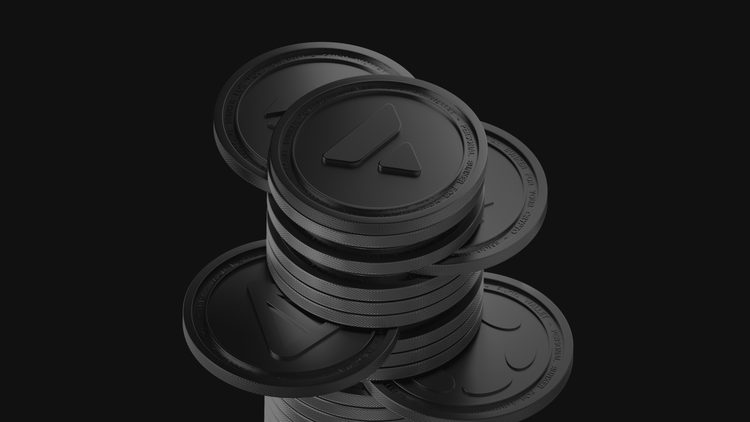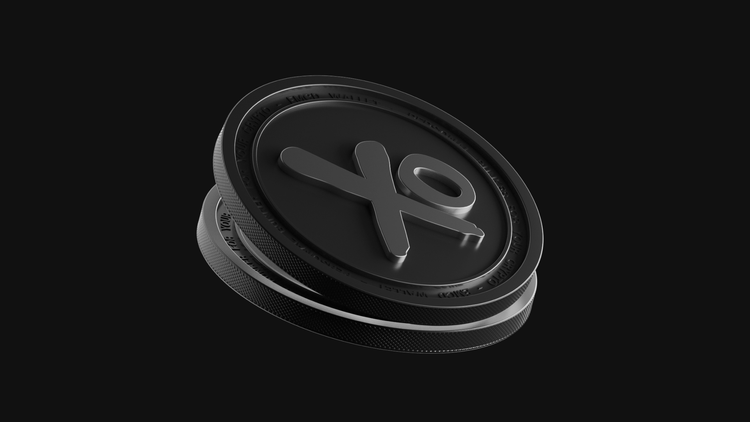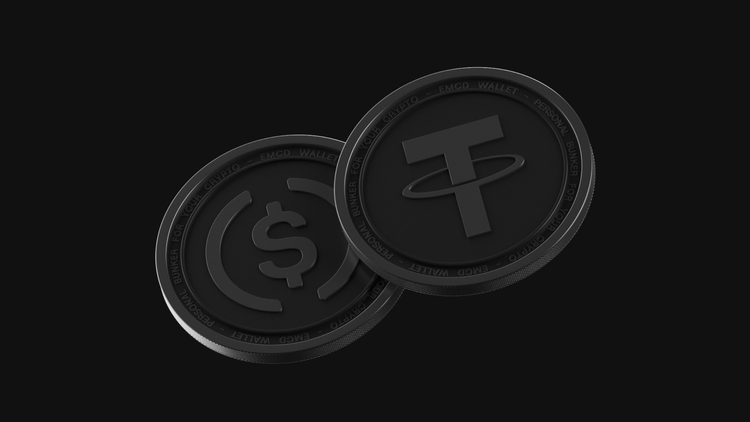SushiSwap Token: Overview, How to Get and Use It

Cryptocurrencies have gained popularity partly because they allow people worldwide to earn and spend money while staying anonymous. However, blockchain alone does not provide all the features that bank or exchange customers are used to. This is why the DeFi sector — decentralized finance — is growing rapidly alongside cryptocurrencies.
DeFi refers to financial services that operate directly on the blockchain without banks or other intermediaries. With DeFi, you can exchange currencies, lend and borrow funds, make deposits, and invest — all without government oversight. Transactions are carried out automatically through smart contracts.
Today, let’s talk about SushiSwap — one of these platforms — and its token, SUSHI.
You can start earning with SUSHI and other popular cryptocurrencies right now using the EMCD platform.
What is SushiSwap and the SUSHI Token
SushiSwap is a decentralized application built on the Ethereum blockchain with its own protocol of the same name. It started as a fork of the popular Uniswap DeFi project, using Uniswap’s original code as its foundation. However, several changes were made, the main one being the introduction of a native ERC-20 token called SUSHI.
This token allows users to participate in the project’s development by voting on proposals. Like other governance tokens in DeFi, SUSHI can be used directly on the SushiSwap platform or traded on many cryptocurrency exchanges. Token holders can:
- Buy and sell it like any other cryptocurrency
- Take part in SushiSwap’s governance votes held by the developers
- Earn passive income by temporarily locking tokens in autonomous liquidity pools
To use this token, you need to:
- Create a crypto wallet that supports Ethereum and ERC-20 tokens
- Fund the wallet with ETH to pay transaction fees
- Connect the wallet to SushiSwap
- Buy SUSHI tokens
Popular wallets for buying, selling, swapping, and storing these tokens include:
- EMCD SUSHI Wallet — a secure custodial multi-currency wallet that’s part of an ecosystem with a mining pool, investment services, and a P2P crypto exchange platform
- MetaMask — a popular browser wallet for Ethereum and other networks
- Trust Wallet — a mobile wallet with a simple interface and broad token support
- Coinbase Wallet — convenient for users who have a Coinbase exchange account
- Rabby Wallet — an alternative to MetaMask focused on DeFi and safer interactions with dApps
You can buy SUSHI directly on the SushiSwap platform or on most major crypto exchanges, including:
- Binance
- Coinbase
- Kraken
- Uniswap
SUSHI is also available through P2P platforms where users buy coins directly from each other — this option is available on EMCD as well.
History of the SushiSwap Project
SushiSwap decentralized financial service was launched in August 2020, using the source code of the popular Uniswap platform as its base. Initially, the project was developed by two anonymous creators known by their nicknames, Chef Nomi and 0xMaki. As SushiSwap gained popularity, the team grew and attracted several well-known developers over time, including:
- Joseph Delong — former CTO of SushiSwap who led its technical development
- LevX — developer of the BentoBox protocol interfaces and features
- OXCharlie — contributor to Sushi’s decentralized products
As of 2025, the development team is determined by the community of SUSHI token holders through governance votes.
The key difference between SushiSwap and Uniswap is the involvement of token holders in the project’s evolution. At launch in August 2020, the SUSHI token traded at under $3. Early on, the project did not attract much attention from the crypto community, and within the first few days SUSHI token price fell sharply to $0.67. This drop was worsened by Chef Nomi’s controversial action in September 2020, when he sold most of his SUSHI holdings. At that time, many believed the project was just another scam meant to enrich anonymous developers.
However, in September 2020, Chef Nomi temporarily transferred control of the project’s funds to Sam Bankman-Fried to restore trust. Soon after, governance was handed over to a decentralized community through DAO. This move convinced more Uniswap users to migrate their funds to SushiSwap, driving rapid growth. By March 2021, the token price had surged above $20. Since then, SushiSwap has expanded to multiple blockchains and added various DeFi products, including lending, yield aggregators, and NFTs.
However, the Bitcoin price drop that began in spring 2021 triggered another “crypto winter,” which also affected SUSHI. By May 2022, the token had fallen to $1.50. Since then, its price has hovered around $1 — as of June 2025, 1 SUSHI can be bought for about 65 cents.
How the SushiSwap Platform Works
Like Uniswap, the platform it’s based on, SushiSwap is a decentralized crypto exchange without traditional order books or centralized management. Instead, all deals are carried out through decentralized liquidity pools, which operate thanks to the staking of SUSHI tokens. To participate in a pool, users simply need to deposit pair of tokens (e.g. SUSHI + ETH) for an equal amount.
As of 2025, SushiSwap supports 42 different blockchains, including:
- ApeChain
- Arbitrum
- Arbitrum Nova
- Avalanche
- Base
- Blast
- BNB Chain
- Boba
- Boba BNB
- BTTC
- Celo
- Core
- Cronos
- Ethereum
- Fantom
- Filecoin
- Fuse
- Gnosis
- HAQQ
- Harmony
- Kava
- Linea
- Manta
- Mantle
- Metis
- Mode
- Moonbeam
- Moonriver
- Optimism
- Polygon
- Polygon zkEVM
- Rootstock
- Scroll
- SKALE Europa
- Sonic
- Taiko
- Telos
- ThunderCore
- TRON
- ZetaChain
- zkLink
- zkSync
On SushiSwap, users have access to the following features:
- Lending and borrowing — users can lend and borrow directly
- Crypto and token swaps — the platform provides cross-chain swaps for all supported blockchains
- Buying and selling NFTs — SushiSwap has its own NFT marketplace called Shoyu
- Staking — depositing tokens to support pool operations. By staking SUSHI, users receive a derivative token, xSUSHI, which entitles them to a share of the transaction fees generated by the pool
- Farming — adding tokens to farms within the pool to earn rewards
Additionally, users can supply token pairs (for example, SUSHI and ETH) to increase a pool’s liquidity and earn even more from transaction fees.
The Role of the SUSHI Token in the SushiSwap Ecosystem
The native SUSHI token plays a central role in the SushiSwap ecosystem and serves multiple important purposes:
- Governance — SUSHI holders can vote on platform development proposals and decide who joins the developer team
- Rewards — users earn SUSHI as a reward for providing liquidity and other contributions that help the platform grow
- Staking — tokens can be staked to receive xSUSHI, which entitles holders to a share of fees generated by the chosen pool
- Community incentives — SUSHI helps to motivate users to participate in development and support of the decentralized exchange
- Promotion — listing the SUSHI token on most major crypto exchanges attracts more investors and increases project visibility
In this way, SUSHI is not just a cryptocurrency token but a key instrument that blends financial motivation with decentralized governance within the SushiSwap ecosystem.
How to Get the SUSHI Token: Methods and Step-by-Step Guide
As of 2025, there are several main ways to get the SUSHI token:
- Buying on exchanges and P2P platforms — you just need a crypto wallet that supports ERC-20 tokens and has some ETH or USDT in it, plus you need access to a suitable exchange or peer-to-peer service
- Yield Farming (providing liquidity) — to earn SUSHI this way, you can add tokens or coins of any supported cryptocurrency to a SushiSwap liquidity pool. In return, you get LP tokens, which can be reinvested into the same pool to earn regular rewards paid out in SUSHI
- Staking — by locking up SUSHI tokens or LP tokens in a pool, you receive xSUSHI. This derivative token gives you a share of fees generated in the selected pool, paid out in SUSHI
Example: how to buy SUSHI on the Binance popular exchange:
- Log in to your Binance account and open the “Trade” section
- In the search bar, type the token name: SUSHI
- Choose a suitable pair, like SUSHI/BTC or SUSHI/USDT. Make sure you have enough of the paired coin in your Binance account
- Find the “Spot” field, enter the amount of SUSHI you want to buy, and choose an order type. A market order is the simplest for quick purchases
- Click “Buy SUSHI” and wait for the tokens to appear in your account
If needed, transfer your SUSHI to your crypto wallet (EMCD, for example)
How to Use the SUSHI Token: Staking, Voting, and Farming
Staking your SUSHI tokens allows you to earn xSUSHI. This derivative token automatically gives you a share of fees from all liquidity pool trades and NFT purchases. To stake SUSHI:
- Go to https://www.sushi.com/stake
- Click “Connect wallet” to link your crypto wallet
- Enter the amount of SUSHI you want to stake
- Click “Stake SUSHI” and confirm the transaction in your wallet
You will start earning passive income in xSUSHI.
Voting lets you help shape the future of the project:
- Visit https://vote.sushi.com
- Click “Log in” and choose your preferred method — WalletConnect, Coinbase, Starknet, or Sequence
- In the “Proposals” section, pick a vote you want to join
- Select your choice — usually “Yay” or “Nay”
Farming allows you to earn rewards for providing liquidity to pools:
- Go to https://www.sushi.com/ethereum/explore/pools
- Connect your wallet
- Choose a token pair you want to farm (for example, USDC / WETH)
- Click “Add Liquidity” — make sure you have both tokens in your connected wallet
- Confirm the token deposit in your wallet
- Wait for your LP tokens to appear
- Go to the “Farm” section, find your pool, and click “Stake LP”
- Earn farming rewards over time
Advantages and Disadvantages of the SUSHI Token
Advantages of investing in SUSHI:
- Proven track record — the token has been available since 2020, so the project is clearly not a scam
- Strong ecosystem connection — SUSHI is backed by the popular SushiSwap DeFi protocol, which attracts serious investors
- Utility within SushiSwap — the token can be used to participate in project governance
- Multiple passive income opportunities — you can earn not only from price fluctuations but also through staking and farming tools
- Accessibility — SUSHI tokens are easy to buy and sell on major exchanges and P2P platforms, supported by many reliable wallets
Disadvantages of such an investment:
- High competition — the market has many tokens from other popular DeFi platforms
- Dependence on the crypto market — like other DeFi projects, SushiSwap’s success heavily depends on BTC, ETH, and other top cryptocurrencies
- Limited chances for rapid price growth — SushiSwap remains popular but is no longer in hype mode, so fast price spikes are unlikely soon
- Complexity for beginners — maximizing passive income requires finding profitable pools and understanding platform and wallet specifics well
Future Prospects for SushiSwap and the SUSHI Token
If the team and community continue actively developing the project, SushiSwap has a strong chance to maintain its position among the top DeFi platforms and even expand its market share. The SUSHI token will remain a valuable tool — both as a source of income and as a means of governance participation. However, the platform’s and token’s success will depend on innovation, marketing, and the overall state of the crypto market.
SushiSwap benefits from an active community involved in its growth, which strengthens trust in the platform and its token. SushiSwap has evolved into a multi-service DeFi hub— it now includes lending, yield farms, and an NFT marketplace. Also it offers cross-chain functionality. The more useful and in-demand products the developers release within the SushiSwap ecosystem, the higher the demand for the SUSHI token will be.
Another important factor for potential success is the real revenue streams that the platform and its investors earn from purchases and other transactions. This distinguishes SUSHI from meme coins and other tokens backed only by temporary hype.
However, competition in the DeFi sector grows every day. Platforms like Uniswap, Curve, Balancer, and especially AAVE offer users comparable functionality and are also successfully developing their products. SushiSwap has long lost its novelty factor, so it risks losing out not only to major players but also to new projects that can deliver unique and innovative solutions.
Should You Invest in the SUSHI Token?
Investing in the SUSHI token may appeal to those interested in decentralized finance and looking to earn passive income through staking and farming. SushiSwap is more than just an exchange — it is a full-fledged DeFi ecosystem supporting 42 blockchains. This ecosystem offers lending modules, an NFT marketplace, and cross-chain operations. The SUSHI token plays a key role in this ecosystem, serving for project governance, investment, and reward distribution. Thanks to broad wallet support and listings on major exchanges, it’s easy to buy and use.
However, SushiSwap is no longer at the height of its popularity, and the SUSHI token currently trades way below its historical peak. The token is strongly influenced by external factors such as declines in major cryptocurrencies’ prices, intense competition from other DeFi platforms like Uniswap and AAVE, and the lack of major innovations in SushiSwap in recent years. Therefore, the SUSHI token should be seen primarily as a tool for earning passive income rather than a high-yield speculative investment.
FAQ
What is the SUSHI token and what is it for?
The SUSHI token is the native token of the decentralized exchange SushiSwap. Within this platform’s ecosystem, it is used for:
- Governance of protocol and exchange development
- Rewarding ecosystem participants for staking
- Distributing income among investors
The token can be compared to shares in the SushiSwap project — holders earn passive income, participate in exchange governance, and can sell tokens to other investors.
How can I earn SUSHI tokens?
You can earn SUSHI tokens in several ways:
- Add liquidity — deposit your crypto into SushiSwap pools and start earning SUSHI tokens as rewards
- Stake tokens — receive a portion of the fees from all exchange trades
- Participate in farming and other platform activities to earn SUSHI and other crypto tokens as rewards
Where is the best place to store SUSHI tokens?
It’s best to store SUSHI where you control access to your funds. Reliable options include:
- EMCD Wallet — a custodial multi-currency wallet with a simple interface, suitable for beginners and advanced users. This wallet is a part of an ecosystem that offers mining pools, P2P exchange, and investment tools
- MetaMask — a browser wallet that works well with DeFi protocols like SushiSwap
- Trust Wallet — a mobile wallet supporting many tokens including SUSHI
- Hardware wallets (e.g., Ledger) — best for long-term storage but less convenient for regular trading
Avoid keeping SUSHI on exchanges due to higher risks of hacks or account freezes.
What is the difference between SushiSwap and Uniswap?
SushiSwap and Uniswap are decentralized exchanges (DEXs) that allow crypto swaps without intermediaries. SushiSwap is a fork of Uniswap, built on its code but with innovations such as:
- The SUSHI token
- Community governance
- Bonuses for liquidity providers
Uniswap is the original, with greater liquidity and a proven reputation. Both are governed via DAOs and have active communities. However, Uniswap Labs still significantly influences its platform’s development, while SushiSwap emphasizes decentralized community governance.
If you want more involvement and extra bonuses, SushiSwap may be your choice. If stability and large token volumes are your priority, Uniswap could be better.
What risks are associated with using SushiSwap?
SushiSwap offers many opportunities but also carries risks:
- Hacks and bugs — smart contracts are code on the blockchain, and errors can lead to theft. This has happened in other DeFi projects
- Volatility — the SUSHI token price can drop sharply
- Regulation — authorities might impose restrictions on crypto or DeFi, affecting SushiSwap’s operation
Always assess risks carefully, follow cybersecurity best practices, and never invest more than you can afford to lose.
Can I earn passive income with the SUSHI token?
Yes, the token provides several ways to earn passive income:
- Staking — locking tokens in liquidity pools earns a share of transaction fees in that pool
- Farming — adding liquidity to specific token pairs also generates passive income in SUSHI tokens
- Activity bonuses — participating in new projects and platform activities can reward you with free or discounted tokens




